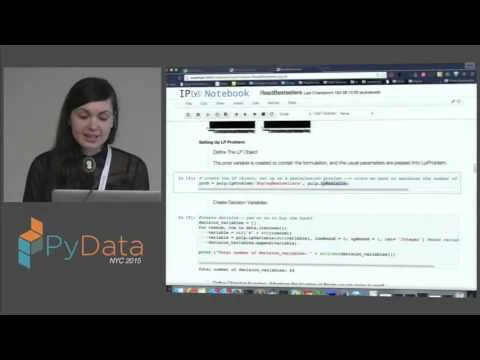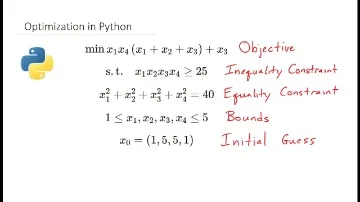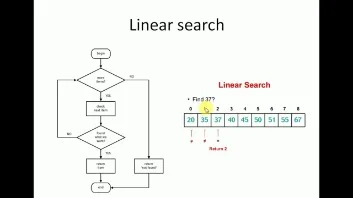Continuous Linear Optimization In Pulp Python
Content
In this section, you’ll learn about the two minimization functions, minimize_scalar() and minimize(). Now that you have the data clustered, you should use it to make predictions about the SMS messages. You can inspect the counts to determine at how many digits the clustering algorithm drew the line between definitely ham and unknown, and between unknown and definitely spam. We will create a list of 3 constraints, calling Constraint for each one, and then walk the variables list and call SetCoefficient for each of the variables. To get started, take the simplest example to figure out how scipy.optimize.linprog() works. The vertices are not necessarily integers and since we can not make cars in fractions, we can only accept integer solutions.
In linear programming, we formulate our real-life problem into a mathematical model. It involves an objective function, linear inequalities with subject to constraints. Scipy.optimize.linprog is the Python library to minimize a linear objective function subject to linear equality and inequality constraints.

Figure 2 is a graph that simulates the amount of time necessary to solve for every possible route, assuming it takes a few seconds to solve for a couple of cities. As you can see, it rapidly becomes impossible to solve the problem in your lifetime. From this output, you see that producing six windows and two doors gives you a profit maximization of $3,600. The model — it’s a concrete model — instantiates the data of the problem, such as the hours available from plants. Constraints are a way of defining an expression that limits the values a variable can assume. Notice that the status attribute now has a value of 9, and the message states that the iteration limit has been exceeded. There’s no way to sell 1000 shares given the amount of money each buyer has and the number of buyers in the market.
Optimal Solution
Mixed-integer linear programming is an extension of linear programming. It handles problems in which at least one variable takes a discrete integer rather than a continuous value. Although mixed-integer problems look similar to continuous variable problems at first sight, they offer significant advantages in terms of flexibility and precision. Assignment problems involve assigning a group of agents to a set of tasks, where there is a fixed cost for assigning each agent to a specific task. The problem is to find the assignment with the least total cost. Assignment problems are actually a special case of network flow problems. Next, we start building the LP problem by adding the main objective function.
SciPy doesn’t allow you to define constraints using the greater-than-or-equal-to sign directly. SciPy doesn’t allow you to define maximization problems directly. It’s free and open source and works on Windows, MacOS, and Linux. You’ll see how to use GLPK with PuLP later in this tutorial. Another great open source solver is the GNU Linear Programming Kit . Some well-known and very powerful commercial and proprietary solutions are Gurobi, CPLEX, and XPRESS. You need to find x and y such that the red, blue, and yellow inequalities, as well as the inequalities x 0 and y 0, are satisfied.

Thus, the ham message cluster starts at the beginning of codes. In this code, you’re creating an empty NumPy array, digit_counts, which has two columns and 5,574 rows. The number of rows is equal to the number of messages in the dataset. You’ll be using digit_counts to associate the number of digits in the message with whether or not the message was spam. Clustering is a popular technique to categorize data by associating it into groups. The SciPy library includes an implementation of the k-means clustering algorithm as well as several hierarchical clustering algorithms.
In this article we will discuss how to solve linear programming problems with Gurobipy in Python. In conclusion, we note that linear programming problems are still relevant today. They allow you to solve a lot of current problems, for example, in planning project management, economic tasks, creating strategic planning. CVXOPT is written by Lieven Vandenberghe and some of his collaborators. CVXOPT is a free software package for convex optimization based on the Python programming language.
Linear Optimization With Python
The optimal value for x and y are 6.0 and 0.0 respectively. The program returns the optimal solution to the problem, as shown below. Raw materials are brought to the first plant from the first warehouse and from the third warehouse . Raw materials are brought to the second plant from the second warehouse and from the third warehouse . In total, both plants will receive 8 tons of raw materials, as required at the lowest possible cost.
GEKKO also solves mixed-integer and differential algebraic equations and has several pre-programmed objects for advanced controls . Modes of operation include data reconciliation, real-time optimization, dynamic simulation, and nonlinear predictive control. If you can formulate your problem as an explicit system of equations and need a free solver, your best bet is probably IPOPT, as Aron said. Other free solvers can be found on the COIN-OR web site. To my knowledge, the nonlinear solvers do not have Python bindings provided by the developers; any bindings you find would be third-party. Alternatively, you could use Bonmin or Couenne, both of which are deterministic non-convex optimization solvers that perform serviceably well compared to the state-of-the-art solver, BARON.
- It turns out that the optimal approach is to exclude the first product and to produce only the third one.
- Scipy.optimize.linprog is the Python library to minimize a linear objective function subject to linear equality and inequality constraints.
- CVXOPT is a free software package for convex optimization based on the Python programming language.
- Linear programming is a special case of mathematical programming, also known as mathematical optimization.
- Next, we give an example of an optimization problem, and show how to set up and solve it in Python.
Due to the transportation and storage constraints, the factory can consume up to one hundred units of the raw material A and ninety units of B per day. For each unit of the first product, three units of the raw material A are consumed. Each unit of the second product requires two units of the raw material A and one unit of the raw material B. Each unit of the third product needs one unit of A and two units of B.
Python
We all have finite resources and time and we want to make the most of them. From using your time productively to solving supply chain problems for your company – everything uses optimization.
In this case, however, the Hessian cannot be computed with finite differences and needs to be provided by the user or defined using HessianUpdateStrategy. Callback functions are not currently supported by the HiGHS methods. To make things interesting & simpler to understand, we will learn this optimization technique by applying it on a practical, day-to-day problem. Having said that, what we learn is applicable to a variety of business problems as well.
How To Create A Wheel File For Your Python Package And Import It In Another Project
A linear programming problem is infeasible if it doesn’t have a solution. This usually happens when no solution can satisfy all constraints at once. If you disregard the red, blue, and yellow areas, only the gray area remains. Each point of the gray area satisfies all constraints and is a potential solution to the problem. This area is called the feasible region, and its points are feasible solutions.

Lists or tuples of LpVariable instances can be useful as well. In the above code, you define tuples that hold the constraints and their names. LpProblem allows you to add constraints to a model by specifying them as tuples. The second element is a human-readable name for that constraint. Fortunately, the Python ecosystem offers several alternative solutions for linear programming that are very useful for larger problems. One of them is PuLP, which you’ll see in action in the next section. Finally, the product amounts can’t be negative, so all decision variables must be greater than or equal to zero.
It’s important in fields like scientific computing, economics, technical sciences, manufacturing, transportation, military, management, energy, and so on. The constraints—restrictions on the set of possible solutions, based on the specific requirements of the problem.
I intentionally implemented solutions for these two modules fully wrapping every possible variable or function into pulp or pyomo objects. The same solution could be achieved using plain python. Optimization is also used for optimizing Delivery Routes. This is an extension of the popular traveling salesman problem.